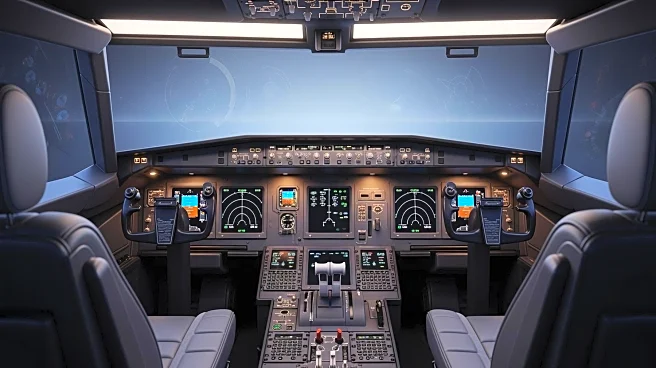What's Happening?
Honeywell Aerospace Technologies has announced key leadership appointments and confirmed its headquarters in Phoenix, marking a significant step in its transition to an independent entity. Jim Currier will continue as CEO, leveraging his extensive experience
to guide the company. Craig Arnold has been appointed as Board Chair, bringing a wealth of industrial and governance expertise. This strategic move is part of Honeywell's plan to spin off its aerospace division, allowing it to operate as a pure-play aerospace supplier. The decision to establish the headquarters in Phoenix solidifies the company's foundation as it prepares to advance aviation innovation. The separation process began in 2024, with the formal plan announced in February. The split is expected to be completed by the second half of 2026, positioning the new entity to focus on future growth opportunities.
Why It's Important?
The separation of Honeywell Aerospace Technologies into an independent entity is significant for the aerospace industry. As a pure-play aerospace supplier, the company will have greater flexibility to innovate and develop new technologies, crucial for the future of aviation. This move allows Honeywell to sharpen its strategic focus and optimize capital allocation, potentially delivering greater value to stakeholders. The leadership of Jim Currier and Craig Arnold is expected to provide the necessary expertise to navigate the global aerospace and defense markets. The establishment of the headquarters in Phoenix positions the company strategically for its operations. The legacy Honeywell business will continue to focus on automation technology, while the new aerospace supplier will operate with full independence, enhancing its ability to meet the demands of the global aviation sector.
What's Next?
The completion of the separation is anticipated by the second half of 2026. As the process unfolds, Honeywell Aerospace Technologies will focus on establishing its operations in Phoenix and leveraging its leadership team to drive innovation. The company aims to capitalize on its $15 billion sales footprint, positioning itself as one of the largest pure-play aerospace suppliers globally. Stakeholders will be watching closely to see how the company navigates this transition and the impact it will have on the broader aerospace industry. The legacy Honeywell business will continue to pursue opportunities in automation technology, while the new entity focuses on advancing aviation technologies.














